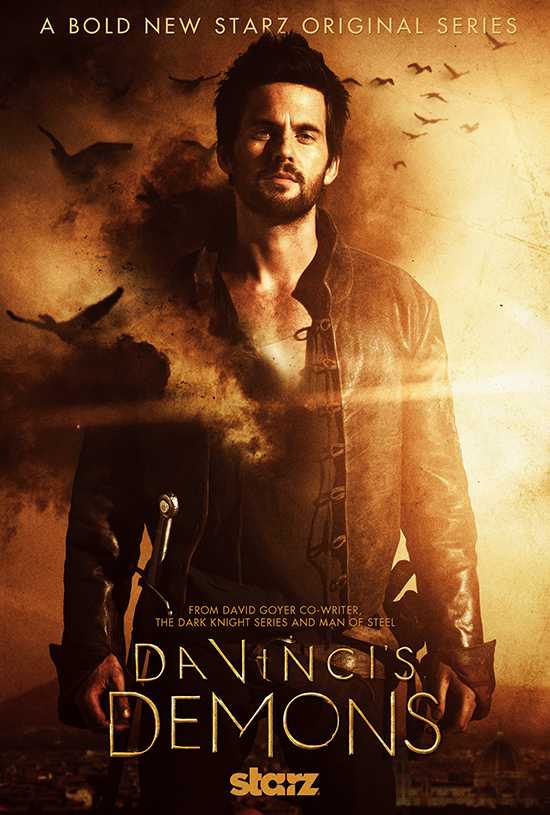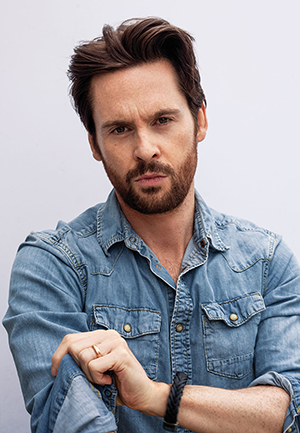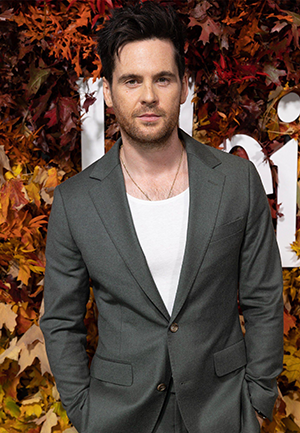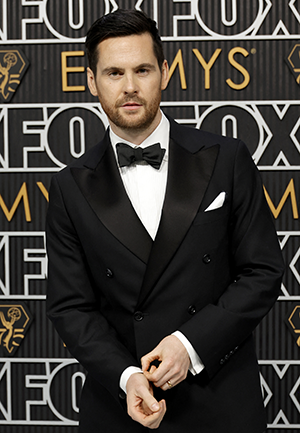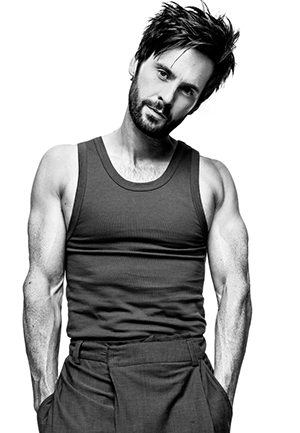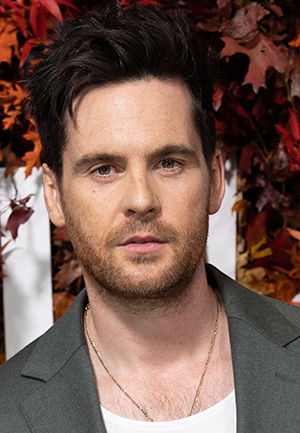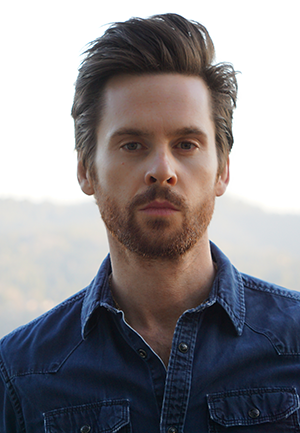David S. Goyer has updated his blog with some news of a new Twitter account DaVinciWriters (follow them!); and has also shared a wonderfully fascinating interview with Tom about his acting career, called Four Questions. Read it in full on his website.
I’m starting a new feature modeled after the Four Questions, which the youngest attendee at any given Passover seder is supposed to ask. I’ll start with Tom Riley, who plays Leonardo Da Vinci in our upcoming show.
We had dinner after our first block of filming at a local Italian place in Swansea called Gallinis. Tom is a gracious and incredibly hard-working guy. I’m excited about Da Vinci’s Demons if, for no other reason, than Tom and the rest of our wonderful cast are going to get significantly more exposure after it airs. So here goes. Four questions about acting (with a few rambling detours along the way):
DSG: When did you know you know you wanted to be an actor?
TR: Really young – crazy young. Like four. I went out to join like a little drama club. I kept demanding to my parents that I wanted to do it. It was called…“The Roundabout” I think it was called.
DSG: And at what point were you making a living acting?
TR: Straight off. My first job, I was still at drama school, and I took over for a guy that had to leave the production – this play in the West End. And it was two days before the technical rehearsal and I came in to bat for him. He came to see it, and he was very gracious afterwards. Very cool guy. But um, yeah that was my first job. Just sort of happened.
DSG: Now, a couple of things I was curious about – well one is, do you think there’s a qualitative difference in the way British actors approach their craft as opposed to Americans?
TR: I’ve worked with American stage actors on Broadway, I’ve worked in American sitcoms. Americans – and actually it’s great, ‘cause it’s similar to the way you direct – they come with confidence. With an attitude of like “Well, we’re going to fucking try this, and if it doesn’t work, then we’ll learn as we go and we’ll pick ourselves up again.” And you can get some amazing results that way.
DSG: And you can also flame out spectacularly.
TR: Yeah. You can do. But hopefully you’ll have someone to say “You’re going way too big,” there’s someone there to steer the ship and it doesn’t matter how fast you come out of the harbor. Whereas Brits tend to go, “We’re going to be tentative…” I think they do a lot of thinking, and then they dip their toes in. “Does this work? Does this work?” And I think part of the reason is because we’re finding our feet and aren’t prepared to just say; “This is what it is.” Whereas Americans are just – confident.
TR: What I try to do is prep to the point where you know the part inside out, and then forget it the minute you’re on set. So you get there, you see whatever the other actors are doing, you see how the shape of the scene is being directed, and then you hope that whatever you’ve prepped, there’re remnants, but you just let it go.
DSG: I thought it was interesting that the scenes you’ve struggled with the most when we were shooting, were the scenes that you’d auditioned. The ones where you had prepared the most. Why is that?
TR: You’re right – it’s because we’ve prepped so hard to show every facet of what you can do in a room. In one scene. And then you get to that scene and of course that scene’s part of a tapestry. And if you’re making it too big, then it doesn’t work. Allan (Corduner) had a similar reaction yesterday. He was like “This was my audition scene!”
DSG: I remember hearing about that. British actors, I think, tend to approach acting more like a craft as opposed to an art. And I’ve always approached writing and directing as a craft, which is not to say that the craft can’t be artistic, but…
TR: What do you see as the distinction between craft and art?
DSG: When I think of “craft,” I think a craftsman. Like a woodworker, who takes a lot of pride and specificity in getting it right. And I guess I’ve always approached writing and directing as, “This is a craft, and I’m going to try to be the best I can possibly be at it and take my ego out of it.” Whereas I think American actors and directors sometimes act like “I’m an “artist” with a capital “A”, so look out…”
TR: I think using art and the idea of being an artist is sometimes just an excuse for behaving in a way because you aren’t sure of what you’re doing. You’re insecure.
This Da Vinci's Demons art work is part of a set of 4 stunning pieces shared by Jerome Villagracia, and appears to be one of the original key art options for consideration. Take a look at the others on his website.
There are some more interesting Da Vinci's Demons concept storyboards on this website.
